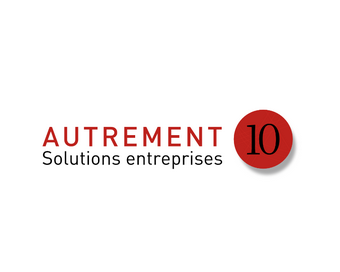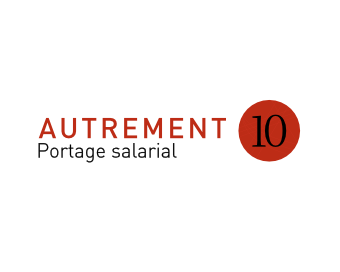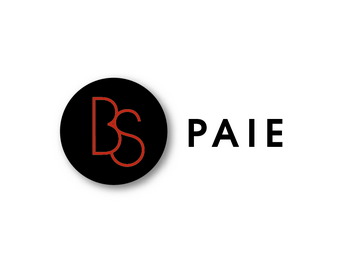oct 16 2023
Times Interest Earned Ratio Interest Coverage Ratio: The Complete Guide to Measuring Debt Servicing Capability
If the company fails to generate enough revenue to cover what is invoice factoring its debt obligations, it could lead to financial distress or even bankruptcy. This number can tell you a lot about a company’s financial health and how it’s managing its money. Whether you’re an investor deciding where to put your money or a business owner trying to improve your operations, this number is crucial. Therefore, even if such companies have high debt-to-equity ratios, it doesn’t necessarily mean they are risky.
Step 2: Identify Total Shareholders’ Equity
In other words, it measures how much debt is being used to finance the company vs. the amount of equity owned by shareholders. This debt to equity calculator helps you to calculate the debt-to-equity ratio, otherwise known as the D/E ratio. This metric weighs the overall debt against the stockholders’ equity and indicates the level of risk in financing your company. Capital-intensive sectors, such as utilities and manufacturing, often have higher ratios due to the need for significant upfront investment. In contrast, industries like technology or services, which require less capital, tend to have lower D/E ratios. Generally, a ratio below 1 is considered safer, while a ratio above 2 might indicate higher financial risk.
Use of Debt-to-Equity Ratio in Stock Market
For example, if home values are increasing in your area or you’ve made valuable improvements in your home, then your home value can increase. Yes, you can take steps to improve your home equity by performing touch ups and making modern updates. There are plenty of ways to increase your home value, whether you’re looking for an extensive project or minor upgrades. Most lenders want to see a CTLV below 85% in order to approve the line of credit. Essentially, this is the amount of home that you’ve paid off toward your mortgage.
Business Insider tells the innovative stories you want to know
The number is a percentage, calculated by dividing the amount you currently owe on your mortgage by the appraised value and multiplying it by 100. Instead, investors should look at other financial indicators and consider the company’s debt exposure to build a better picture of the company’s financial strength. The debt-to-equity ratio is useful for quick financial assessments, while the gearing ratio offers deeper insights for long-term planning. Here are gearing ratios typically used by SMBs and their advisors to measure their financial leverage and risk.
Interpreting the D/E ratio requires some industry knowledge
They can simply wait out the downturn until values eventually come back up. However, if they need to sell during this period, the sales price would not cover the loan balance. A loan-to-value ratio is a financial calculation that shows how much of an asset is financed as a percentage of its total value. Tech and software companies tend to have higher ROEs due to their use of asset-light models while manufacturing companies have lower ROEs due to high capital investments.
How to calculate Return on Equity (ROE)
Lenders and debt investors prefer lower D/E ratios as that implies there is less reliance on debt financing to fund operations – i.e. working capital requirements such as the purchase of inventory. Gearing ratios are financial ratios that indicate how a company is using its leverage. In some cases, companies can manipulate assets and liabilities to produce debt-to-equity ratios that are more favorable. If they’re low, it can make sense for companies to borrow more, which can inflate the debt-to-equity ratio, but may not actually be an indicator of bad tidings.
How to Calculate the D/E Ratio in Excel
The depository industry (banks and lenders) may have high debt-to-equity ratios. Because banks borrow funds to loan money to consumers, financial institutions usually have higher debt-to-equity ratios than other industries. Using excel or another spreadsheet to calculate the D/E is relatively straightforward. First, grant accounting using the company balance sheet, pull the total debt amount and the total shareholder equity amount, and enter these numbers into adjacent cells (e.g. E2 and E3). The term “leverage” reflects the hope that the company will be able to use a relatively small amount of debt to boost its growth and earnings.
A company’s financial health can be evaluated using liquidity ratios such as the debt-to-equity (D/E) ratio, which compares total liabilities to total shareholder equity. A D/E ratio determines how much debt vs. equity a company uses to finance its operations. The debt-to-equity ratio (D/E) compares the total debt balance on a company’s balance sheet to the value of its total shareholders’ equity. The numerator in above formula consists of total current and long-term liabilities and the denominator consists of total stockholders’ equity, including preferred stock, if any. Both the elements of the formula can be obtained from company’s balance sheet. The debt to equity ratio is calculated by dividing total liabilities by total equity.
Wise use of debt can help companies build a good reputation with creditors, which, in turn, will allow them to borrow more money for potential future growth. • The D/E ratio is just one of many indicators investors should consider, as it should be contextualized within industry standards and accompanied by a broader analysis of a company’s financial health. On the other hand, the typically steady preferred dividend, par value, and liquidation rights make preferred shares look more like debt. Short-term debt also increases a company’s leverage, of course, but because these liabilities must be paid in a year or less, they aren’t as risky. While no single financial ratio provides a complete picture, the TIE ratio offers a straightforward yet powerful gauge of solvency that complements other metrics in comprehensive financial analysis. This exceptionally high TIE ratio indicates minimal default risk but might suggest the company is under-leveraged.
- Find out how LTV affects your finances and how to improve your ratio with this introduction to loan-to-value.
- The investor has not accounted for the fact that the utility company receives a consistent and durable stream of income, so is likely able to afford its debt.
- The debt-to-equity ratio is useful for quick financial assessments, while the gearing ratio offers deeper insights for long-term planning.
- This information is commonly used in real estate transactions to see how much of a property’s value is held by the lender vs. how much of the value is held by the owner.
- It reflects the comparative claims of creditors and shareholders against the total assets of the company.
- However, a low D/E ratio is not necessarily a positive sign, as the company could be relying too much on equity financing, which is costlier than debt.
For startups, the ratio may not be as informative because they often operate at a loss initially. In this guide, we’ll explain everything you need to know about the D/E ratio to help you make better financial decisions. From Year 1 to Year 5, the D/E ratio increases each year until reaching 1.0x in the final projection period. Upon plugging those figures into our formula, the implied D/E ratio is 2.0x.
- What investors generally see as a negative indicator is if ROE is declining.
- Leverage refers to the amount of borrowed money used to finance a business’s operations and, eventually, to enhance revenue.
- For example, companies in the utility industry must borrow large sums of cash to purchase costly assets to maintain business operations.
- Unlike the debt-assets ratio which uses total assets as a denominator, the D/E Ratio uses total equity.
- A business might have a high ROE but limited reinvestment opportunities (e.g., it has already saturated its market), in which case future growth would be restricted.
- However, a lower D/E ratio isn’t automatically a positive sign — relying on equity to finance operations can be more expensive than debt financing.
What is the Debt to Equity Ratio Formula?
The debt to equity ratio is considered a balance sheet ratio because all of the elements are reported on the balance sheet. Like start-ups, companies in the growth stage rely on debt to fund their operations and leverage growth potential. Although their D/E ratios will likely be high, it doesn’t necessarily indicate that it is an unattractive business to invest in. The risk might be higher than for an established company, but you have to consider why the company is using debt financing and what it is using the funds for. In some cases, investors may prefer a higher D/E ratio when leverage is used to finance its growth, as a company can generate more earnings than it would have without debt financing.
You can contact us any time if you would like to ask any questions about debt-to-equity ratios or anything else related to the stock market. The answer is that investments based on low debt-to-equity ratios are not always profitable, but what is cost of goods sold and how do you calculate it for certain stocks they might indeed have a track record of success according to our backtest research. The lender of the loan requests you to compute the debt to equity ratio as a part of long-term solvency test of the company. Unlike the high debt-to-equity ratio, a low D/E value tells investors that a listed organisation heavily relies on equity to finance its business.
The data required to compute the debt-to-equity (D/E) ratio is typically available on a publicly traded company’s balance sheet. However, these balance sheet items might include elements that are not traditionally classified as debt or equity, such as loans or assets. A company’s total debt is the sum of short-term debt, long-term debt, and other fixed payment obligations (such as capital leases) of a business that are incurred while under normal operating cycles. By learning to calculate and interpret this ratio, and by considering the industry context and the company’s financial approach, you equip yourself to make smarter financial decisions. Whether evaluating investment options or weighing business risks, the debt to equity ratio is an essential piece of the puzzle.

































